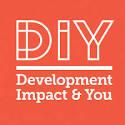Full Text Sharing
Categories:

- Who will help you?
- How do you do it?
- What do you do?
- How do you interact?
- Who do you help?
- What do they need?
- How do you reach them?
- How much will it cost ?
http://diytoolkit.org/tools/business-model-canvas/
- The toolkit offer an amazing variety of tools to design, plan, test and move ahead with your idea.
- For example you have a project and you want to make it bigger, expand it and scale it up. If this is your case, try with the Business Model Canvas. Imagine your project as a panting: your actual project is actually like a canvas where you have to draw in new parts of your project. In this canvas, you have to "draw" based on the following questions:
- Then do you want to build partnership? Are you lookking for some tools to map potential partners, then you can use the Building Partnership Map that helps you develop a clear plan on how to work with other organizations who have your same vision.
- http://diytoolkit.org/tools/building-partnerships-map-2/
- Do you want to collect the inputs and feedback from someone in a new original way? Then you can use the Interview Guide that helps you discover the undiscovered.
- http://diytoolkit.org/tools/interview-guide-2/
- Do you want to test and try your idea? Then you should try with the Improvement Triggers that will help you understand what is more effective in your work
- http://diytoolkit.org/tools/improvement-triggers/
- The above mentioned are just few examples, have the full list from here: http://diytoolkit.org/tools/
- Below an overview of all the 30 tools
- look ahead
- develop a clear plan
- clarify my priorities
- collect inputs from others
- know the people I'm working with
- generate new ideas
- test and improve
-
- by understanding what is most effective in my work. Improvement Triggers
- by collecting useful feedback on my work at different phases. Prototype Testing Plan
- by creating an overview of how I engage with my stakeholders. Experience Map
- by crafting a detailed overview of our operations and resources. Blueprint
- sustain and implement








7d88.png?itok=KI18yp23)

Add new comment